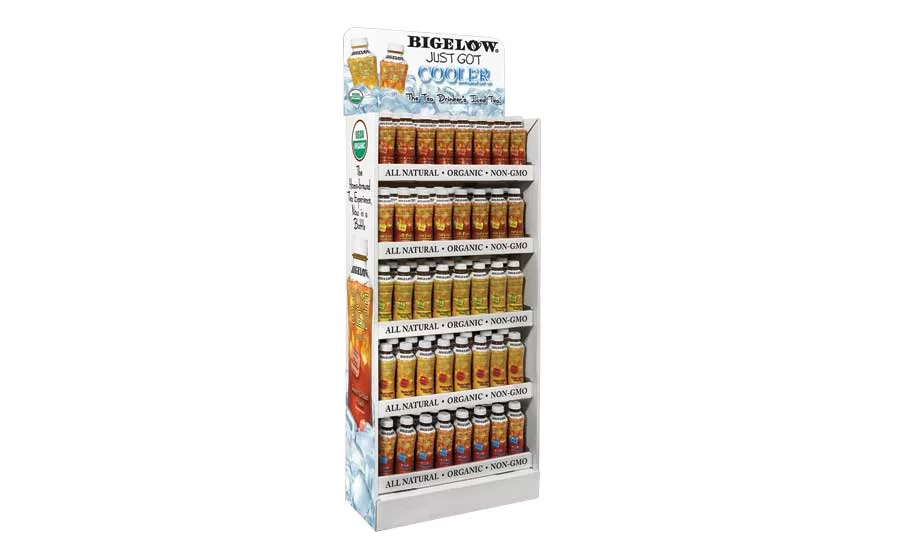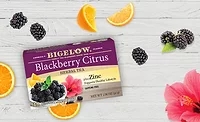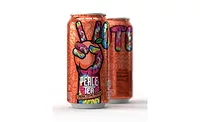Bigelow Tea partners with Sutherland Packaging
Sutherland Packaging creates corrugated packaging display for RTD teas

A family-run business spanning three generations, Bigelow Tea Co., Fairfield, Conn., was founded more than 70 years ago when Ruth Campbell Bigelow created a zestfully flavored Constant Comment tea. Succeeding generations of the family have carried on the tradition of innovation, and today, the company produces 1.7 billion tea bags annually. In 2015, Bigelow was ready for a leap into a new category: ready-to-drink (RTD) bottled organic iced tea.
Packaging challenge
Packaging its teas properly always has been of prime importance to Bigelow as a means to ensure optimum quality and taste. This is why the company began the innovative practice of protecting its tea bags in individual foil pouches, shielding the delicate tea leaves from air, moisture and surrounding aromas, and locking in flavor and freshness.
However, when Bigelow decided to launch its first the RTD iced teas, it faced a formidable challenge. The primary package — a visually appealing, easy-to-handle 16-ounce bottle — was already established, but its heavier weight posed a potential problem. Bigelow never had gone to market with a package that weighed more than a few ounces. Until now, its lightweight products had offered advantages relating to point-of-purchase display stands, which could be light/portable, easily assembled, disposable/recyclable and cost-effective.
Therefore, development of an optimal retail display stand presented a challenge for the new product launch. Bigelow needed packaging that not only would be attractive and true to the brand, but also would perform well under the stressful circumstances typical to supermarkets and club stores. It also needed to be simple for supermarket employees to assemble.
A strong partner
For more than five years, Bigelow had been working with Sutherland Packaging, an Andover, N.J.-based provider of corrugated point-of-purchase displays and packaging for retail locations and club stores. When the company approached Sutherland with its latest challenge, Robert Clark, Sutherland’s senior sales representative, assured Bigelow that the company could develop a custom-engineered display that would be strong, attractive, highly functional and easy to assemble.
Although the supplementary use of wood or metal was briefly considered, the idea was discarded as the new product initially would be introduced as an “in-and-out” item. It was determined that an affordable and recyclable stand was the best solution.
Sutherland’s design department created a sturdy 4-foot-tall, completely corrugated display stand that could hold 10 cases of 12 bottles weighing 16 ounces each — for a total of 120 pounds. The department designed an eye-catching image depicting the new Bigelow iced tea bottle, which would cover two-thirds of the front, sides and back of the display unit. Because consumers would be able to see the bottles, the image needed to accurately reflect the bottle and be large enough to be visible from several feet away and from all sides. Bigelow also seized the enhanced branding opportunity to prominently display several of its key selling points, which included the fact that its products are non-GMO, U.S. Department of Agriculture certified organic and gluten free.
As with previous projects in the longstanding partnership, the display stand would be created utilizing Sutherland’s innovative direct-color print technology. By forgoing the need for a lithographic label, and instead using Sutherland’s high-impact direct-to-corrugated color printing technique, Bigelow would be able to increase speed-to-market and achieve significant, long-term cost savings — a plus considering the product’s anticipated success and growth.
After Bigelow chose its favorite design from a selection of options, Sutherland created the prototype, which included provision for a header card that could be directly placed into the case. This drop-in header card solution would be easy for stores to handle as it was customizable for in-store promotion, yet standardized for cost-effectiveness.
Crash testing and product rollout
Yet, the new stand’s durability had to be tested. Bigelow Marketing Manager Tim Richmond designed an unorthodox crash test, keeping the new stand, laden with the full complement of 120 16-ounce bottles, outside of his office for six months, and encouraged passersby to “beat it up and kick it around.”
The display passed the test, standing strong and looking none the worse for wear.
Consumers can soon expect to see Bigelow’s new iced tea display as the bottled product debuts around the country.
“We have collaborated with Sutherland Packaging on many projects. This one presented special challenges — all of which were expertly met with Sutherland’s can-do attitude and a desire to find a perfect solution that met all objectives,” Richmond says.
Looking for a reprint of this article?
From high-res PDFs to custom plaques, order your copy today!





